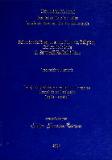| dc.contributor.advisor | Monge Meza, Carlos Francisco | |
| dc.contributor.author | Fernández Rodríguez, Felipe | |
| dc.date.accessioned | 2020-10-21T21:53:33Z | |
| dc.date.available | 2020-10-21T21:53:33Z | |
| dc.date.issued | 2004 | |
| dc.identifier.other | 000097307 | |
| dc.identifier.uri | http://hdl.handle.net/11056/18407 | |
| dc.description.abstract | El presente trabajo consta de dos partes, la Traducción del TO y la Memoria, esta última tiene
una introducción general sobre el texto traducido, el por qué se elige, el aporte al área del
conocimiento en el campo de la traducción, además se refiere a los problemas que se
desarrollarán en los otros capítulos: El Capítulo presenta los detalles de los rasgos del TO y el
planteamiento de los problemas que se encontraron y que serán de utilidad para otros
traductores. El Capítulo II considera el tema de la relación entre la traducción y la cultura, se
analizarán las opciones para traducir un texto o no y cómo influye la cultura en el proceso de
traducción. En el Capítulo III se justifica la elaboración de un glosario de los términos del
sánscrito que se utilizan a lo largo del TO y también en el TM, Por último, el Capítulo IV es
sobre un análisis comparativo de la relación entre el Ser y el Devenir, partiendo del
pensamiento filosófico antiguo, aplicado a la traducción en cuestión. Además de los capítulos,
la Memoria cuenta con sus conclusiones y recomendaciones, y la bibliografía de referencia. | es_ES |
| dc.description.abstract | This work consists of two parts, the Translation of the TO and the Memory, the latter has a
general introduction about the translated text, why it is chosen, the contribution to the area of
knowledge in the field of translation, it also refers to the problems that will be developed in the
other chapters: The Chapter presents the details of the OT features and the statement of the
problems that were found and that will be of use to other translators. Chapter II considers the
issue of the relationship between translation and culture, it will analyze the options to translate a
text or not and how culture influences the translation process. In Chapter III the elaboration of a
glossary of the Sanskrit terms that are used throughout the TO and also in the TM is justified.
Finally, Chapter IV is about a comparative analysis of the relationship between Being and
Becoming , starting from ancient philosophical thought, applied to the translation in question. In
addition to the chapters, the Report has its conclusions and recommendations, and the
reference bibliography. | es_ES |
| dc.description.sponsorship | Universidad Nacional, Costa Rica | es_ES |
| dc.language.iso | spa | es_ES |
| dc.publisher | Universidad Nacional, Costa Rica | es_ES |
| dc.rights | Acceso abierto | es_ES |
| dc.rights | Attribution-NonCommercial-NoDerivatives 4.0 Internacional | * |
| dc.rights.uri | http://creativecommons.org/licenses/by-nc-nd/4.0/ | * |
| dc.subject | FILOSOFIA HINDU | es_ES |
| dc.subject | RELIGION | es_ES |
| dc.subject | CULTURA | es_ES |
| dc.subject | INDIA | es_ES |
| dc.subject | ENSAYOS INDIOS | es_ES |
| dc.subject | TRADUCCION | es_ES |
| dc.subject | HINDU PHILOSOPHY | es_ES |
| dc.subject | RELIGION | es_ES |
| dc.subject | CULTURE | es_ES |
| dc.subject | INDIAN ESSAYS | es_ES |
| dc.subject | TRANSLATION | es_ES |
| dc.title | Selección de ensayos sobre filosofía, religión y cultura de la india de Sarvepalli Radhakrishnan : traducción y memoria | es_ES |
| dc.type | http://purl.org/coar/resource_type/c_7a1f | es_ES |
| una.tesis.numero | 4988 | es_ES |
| dc.description.procedence | Escuela de Literatura y Ciencias del Lenguaje | es_ES |


